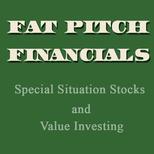By Jeremy Schwartz, CFA, Executive Vice President, Global Head of Research, WisdomTree
On a recent “Behind the Markets” podcast, Liqian Ren and I were joined by Kelvin Zhang and Peter Boockvar.
In the first half of the podcast, Zhang, a partner at AlphaLetters, LLC, discussed sector-based research and the rise of alternative data.
Boockvar, the CIO and portfolio manager at Bleakley Advisory Group, followed with a macro-focused discussion and explained his more defensive and bearish outlook on 2019.

A New Approach
Zhang leads research and product development at AlphaLetters, a quantitative research group that provides stock selection and asset allocation services to money managers.
With many of the theories and much of the research in the quantitative field coming from academia, Zhang described AlphaLetters’ unique ability to bridge the gap between academic research and the fund managers who implement ideas.
Zhang said that new alternative data sets are improving quantitative trading strategies—particularly for sector-based work. The more traditional way of analyzing data sets—for example, via trading metrics such as price and volume—has become a less reliable form of seeking alpha.
Data Mining
Zhang explained that with data mining, users can influence a data set to agree with their theory if they are able to manipulate it long enough. These alternative data sets provide a more intuitive and less exploited way of conducting analysis.
Examples of data sets can range from looking at the spending trends of a 10-million-person sample of credit card users to using satellite imagery to observe parking lots outside of brick-and-mortar retail chains.
Zhang believes this promising form of research will lead to the continuation of increasing trends in “quantamental” investing, machine learning, alternative indexing and ESG (environmental, social and governance) factors.
Seeking Alpha
Zhang has also spent a great deal of his time researching foreign exchange (FX) alpha strategies because they can be an effective way to reduce costs, increase returns and lower risk. Again citing academic work, he noted the struggle with FX to be the lack of a centralized exchange and how this has led to interesting findings on the relationships between price swings and trading volumes.
Boockvar is the CIO at Bleakley Advisory Group, a conventional wealth manager, where he manages a global macro multi-asset strategy.
Boockvar believes the market currently sits at an inflection point; as the growth scare, rate hikes and trade tensions have faded and the relief rally has run its course, the fundamentals of the market will decide the market’s direction from here.
The slowdown in earnings growth in the United States and slowed growth in Europe could start to weigh on the market. In the S&P 500, a level of 2,800 has proven to be a level of resistance recently, and it will be interesting to see if it is able to break through.
Dry Powder
Boockvar prefers to hold more dry powder in his portfolios today because this provides more options to invest in attractive situations that could arise.
Boockvar likes gold and silver as a hedge against the weakening U.S. dollar—in addition to emerging market assets and emerging market local currency bonds.
There is reason for concern in bonds beyond the flat yield curve because the European Central Bank) and the Bank of Japan may eventually try to get their rates out of negative territory, pressuring global yields, including U.S. yields, higher.
Boockvar warned listeners that the central banks will not be able to bail out the economy in the next downturn as much as they have in the past because there is less room for rate cuts.
The Federal Reserve (Fed) wanted to get the Federal Funds Rate above 3%, and a 200 basis point drop will not provide much relief during the next recession. This smaller room for error will force investors to pay close attention to valuations going forward.
To listen to our full conversation with Boockvar and Zhang, go here.
Versions of this article first appeared on the WisdomTree blog on March 5 and SeekingAlpha on March 6.
Photo Credit: Christiaan Colen via Flickr Creative Commons
Disclosure: Certain of the information contained in this article is based upon forward-looking statements, information and opinions, including descriptions of anticipated market changes and expectations of future activity. WisdomTree believes that such statements, information, and opinions are based upon reasonable estimates and assumptions. However, forward-looking statements, information and opinions are inherently uncertain and actual events or results may differ materially from those reflected in the forward-looking statements. Therefore, undue reliance should not be placed on such forward-looking statements, information and opinions.
About the Author: Jeremy Schwartz, CFA, Director of Research, WisdomTree Asset Management is responsible for the WisdomTree equity index construction process and oversees research across the WisdomTree family. Prior to joining WisdomTree, Jeremy was Professor Jeremy Siegel’s head research assistant and helped with the research and writing of Stocks for the Long Run and The Future for Investors. He is also co-author of the Financial Analysts Journal paper “What Happened to the Original Stocks in the S&P 500?” Jeremy is a graduate of The Wharton School of the University of Pennsylvania and currently stays involved with Wharton by hosting the Wharton Business Radio program “Behind the Markets” on SiriusXM 111.


